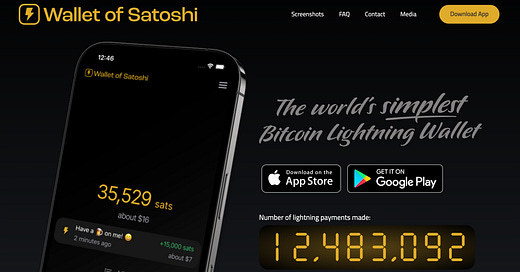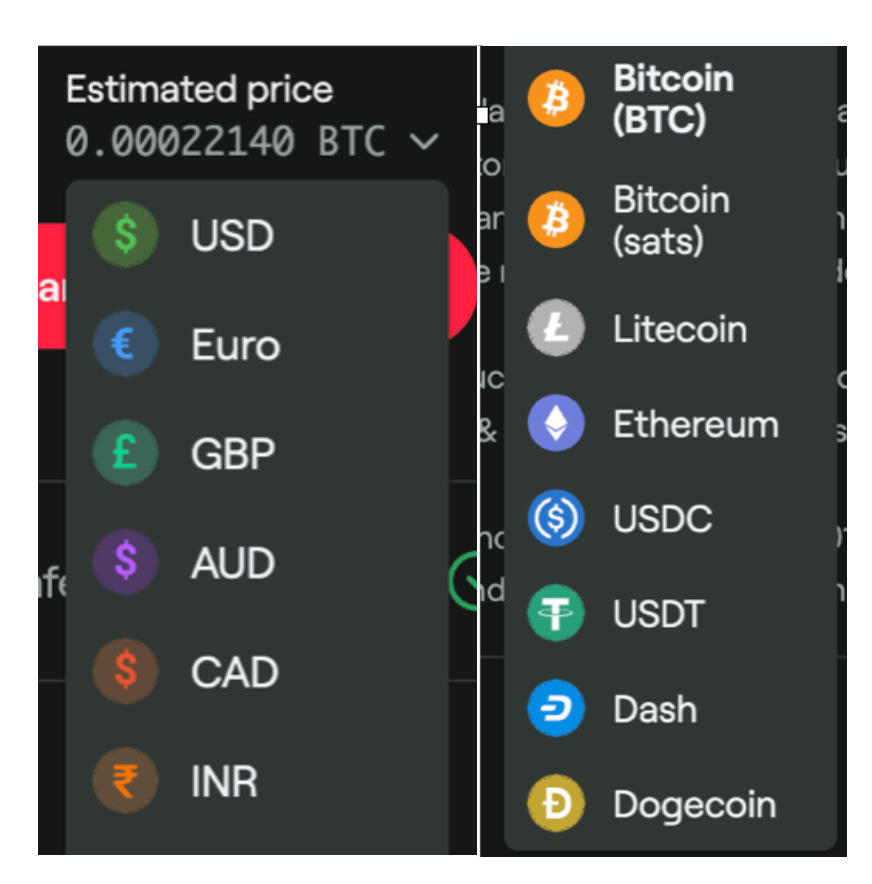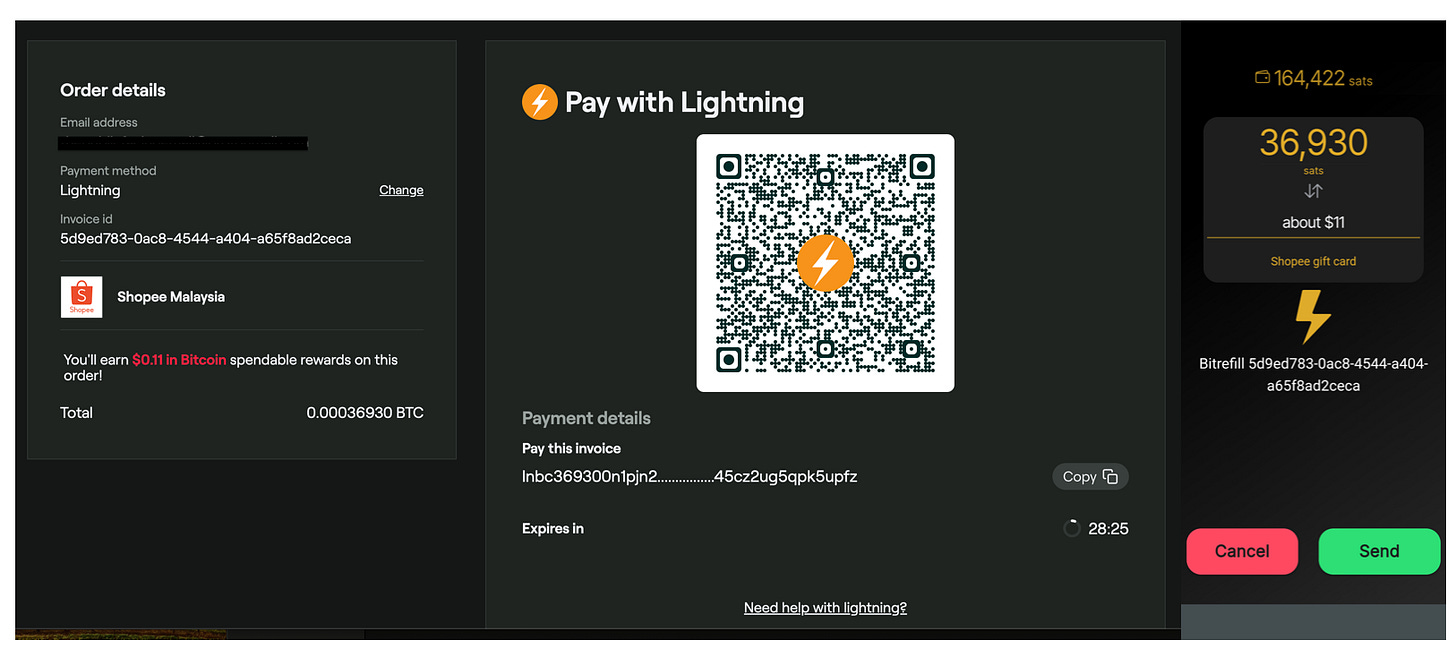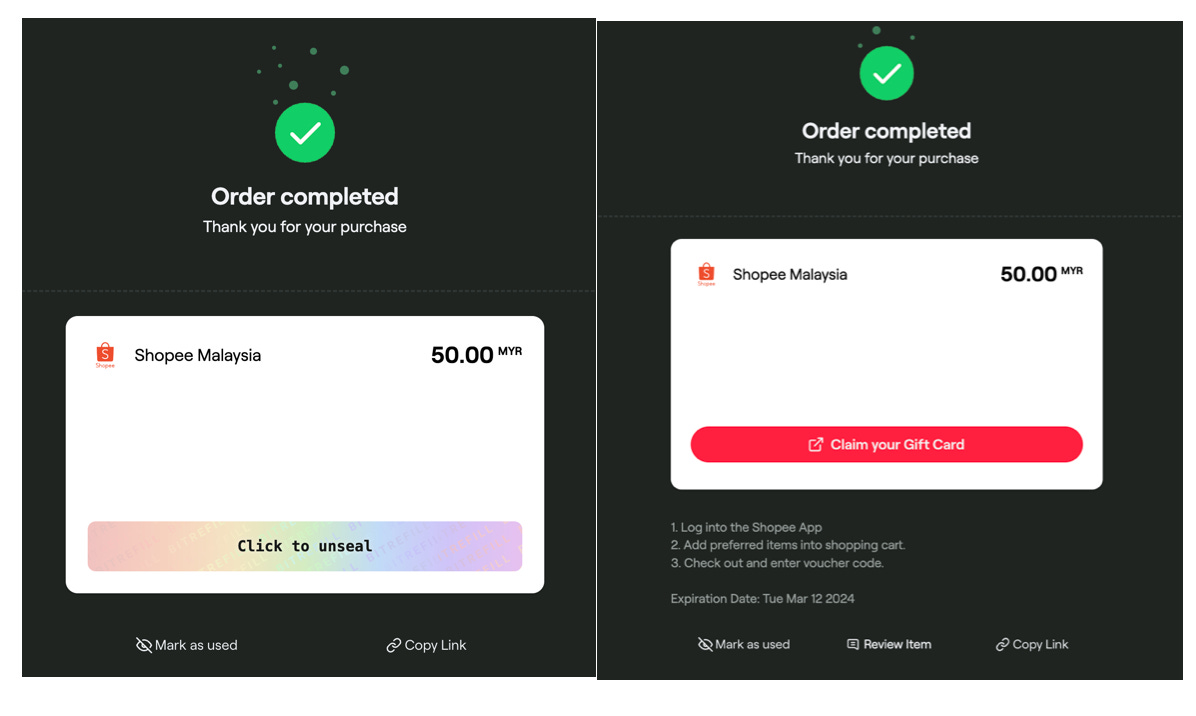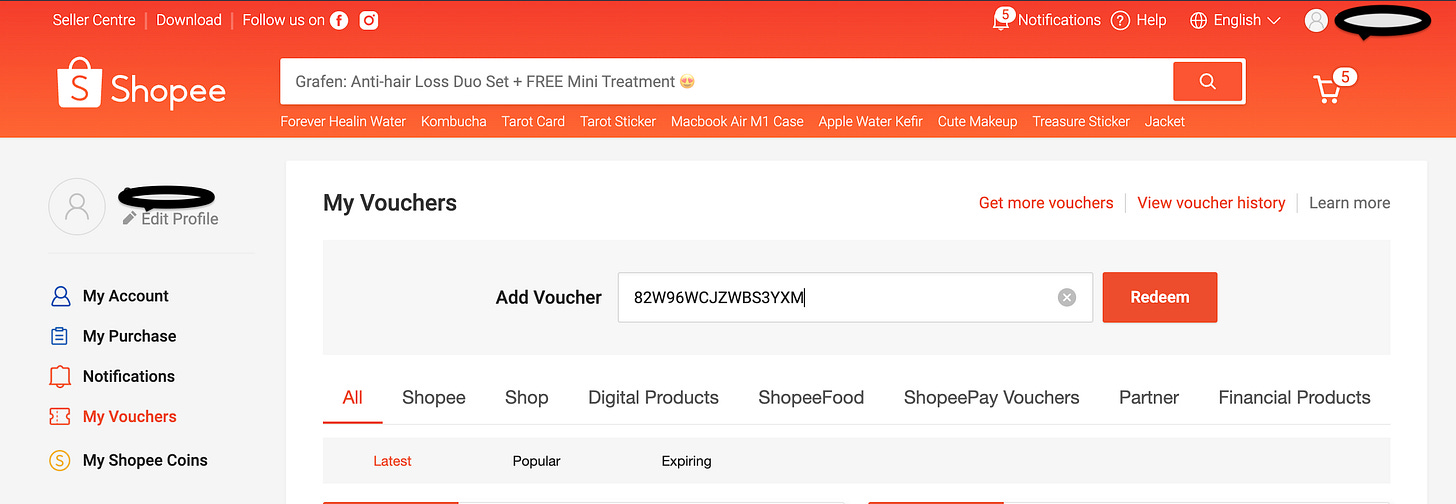Using Bitcoin For Daily Necessities
Dear readers,
I am slowly cottoning on to the idea of using bitcoin to pay for things that I need in life. This means paying my phone bill and groceries, maybe the occasional shirt or shoes. How I am coming around to doing this is written in another post.
At this point, I will digress a bit: if anyone were to ask me for a use case for crypto with the idea of “Is there something crypto can be currently useful in society that cannot otherwise be achieved without it?” I would say “no” in the most truthful manner. Because crypto’s job isn’t to replace everything in the world with what it can do. Its presence is simply to offer an option which one is free to take or leave.
The idea above would represent a kind of absolutism to me, wherein the answer being “no” would mean that there is no space or need or use for crypto. For these kinds of ideas, I’d happily give it a resounding slap in the face.
For this issue of the newsletter, I will explore the practicality of using crypto to live life as you currently do by showing you that it is very much a possibility that you can take into account.
Bitcoin and the Lightning Network
It’s common knowledge that the Bitcoin network is not known for speed. Ponderous compared to other networks even like Ethereum, which is also considered much slower than its L2 counterparts, it was quickly agreed-upon by everyone that making daily transactions using the Bitcoin network is not going to work.
Some people wanted Bitcoin to live up to its idea of being a method of payment and they came up with the Lightning Network.
In a nutshell, this network runs aside the Bitcoin network. How it works is this: instead of settling all transactions, big and small, on the main Bitcoin network, a channel is activated between two nodes, or two transacting parties, to do their transactions with each other until the channel is closed by one of the parties.
The bar tab analogy best first this scenario, whereby a tab with the bar is opened and food and drinks flow between the table of diners and the restaurant/bar. When dinner is over and all the drinks have been served, the tab is settled.
Running with this analogy, the opening and the closing of the tab are the two activities that are “reported” to the main Bitcoin network. The actual orders themselves are not known to the main network.
This structure greatly speeds up transactions while still maintaining the irreversible nature of blockchain transactions.
If you’d like to learn more, please check out this article I wrote for Coin Bureau about the Lightning Network.
Wallet of Satoshi
After introducing the infrastructure, the next important element is the wallet used to make payments. Wallet of Satoshi was highly recommended to me by various bitcoin experts, and I find their recommendations to be a solid one. The slogan on its website is “The World’s Simplest Bitcoin Lightning Wallet” and it assuredly lives up to its claim. All I had to do was download the app onto my phone, transfer some bitcoin into it, and off I went!
I use this wallet like I use my e-wallets. This means I only put in a small amount just enough for purchases while I use a cold wallet to store the bulk of my bitcoin. It would be preferable that you see this wallet as something akin to your checking account, and not a bank vault- type of heavy-duty wallet.
Once again, I’ve covered a number of Lightning Wallets in this Coinbureau article which you can check out if you’re interested. In fact, it was after I did the research for the article that I took the plunge!
Introducing Bitrefill and Wallet of Satoshi
Now that the infrastructure for making Bitcoin micro-transactions has been set up, the next step is to give it a try. What can I buy with Bitcoin other than exchanging it for cold, hard cash?
Someone mentioned Bitrefill to me and I happily went down the rabbit hole and tested it out. It worked really well and I was very pleased with the results.
About Bitrefill
Bitrefill is a company based in Stockholm, Sweden. Their business model is that they sell gift cards from both online and offline stores in various parts of the world and accept crypto payments in return. These gift cards can then be redeemed at the store for purchases.
This is no fly-by-night company as their career page proclaims that they are the #4 fastest growing company in Sweden in 2020, as ranked by Deloitte, one of the Big Four. At the very least, this is not a scam company that takes your crypto and gives you duds.
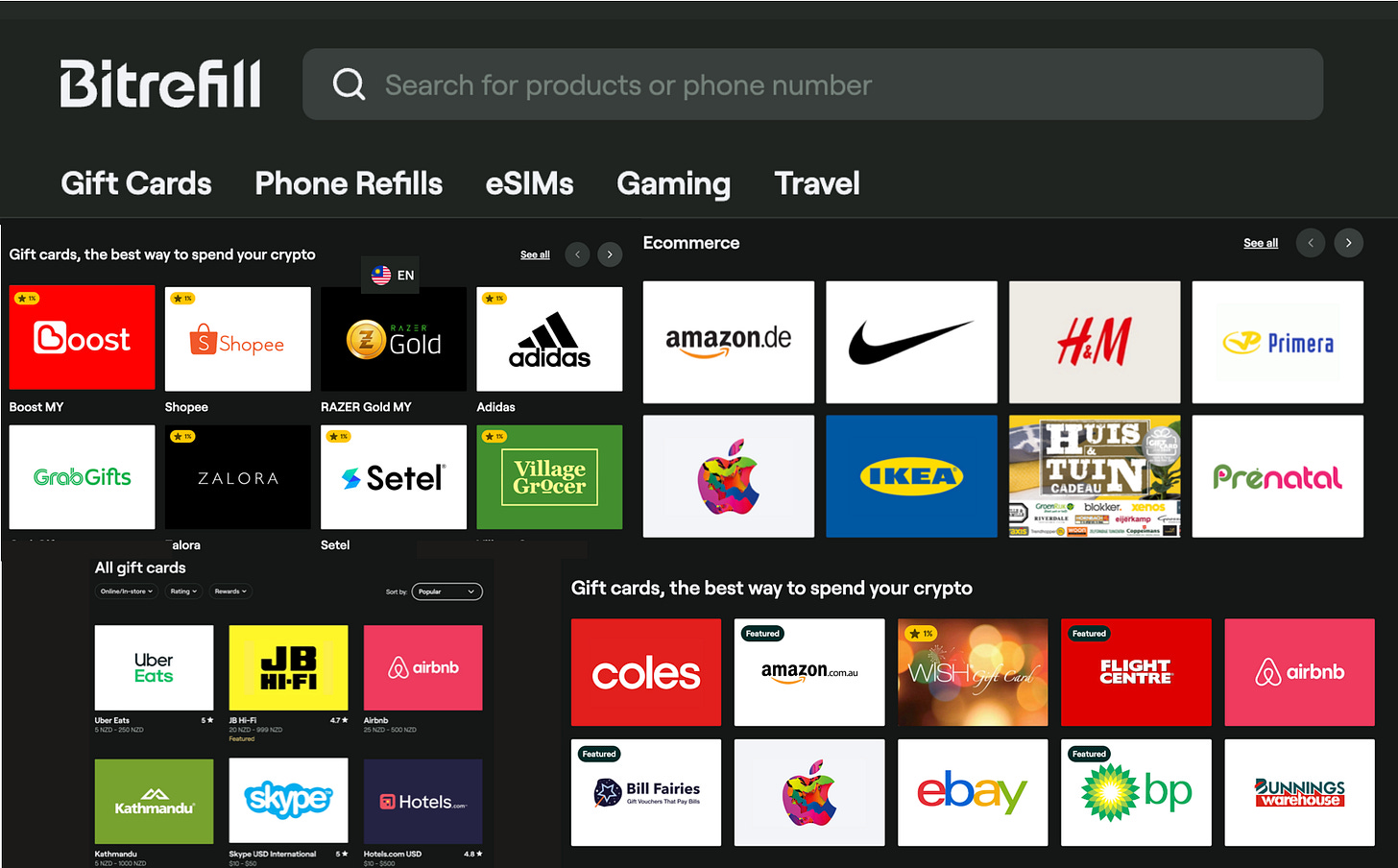
Paying with Bitcoin
Now that I have the wallet ready with funds in it and a place to spend the crypto, let’s see how I “live on bitcoin”!
1. Go to the Bitrefill website.
2. Select the gift card I want to buy. The page shows you the various denominations that they sell together with a description of the store and how to redeem the gift card.
If you have difficulty doing so, you can always click on the Report an Issue link at the bottom of the page.
3. Select the gift card value you want to pay for. Aside from bitcoin, you can also pay with various currencies or other kinds of crypto such as USDC, USDT, Ethereum, Litecoin, Dash, and Dogecoin.
4. Add the item to the cart and head over to the checkout area if you’re done shopping.
5. Confirm the items in your Order Summary and choose which crypto asset you want to use to pay for your purchase.
Note that if you want to pay with USDC or USDT, Bitrefill supports a number of networks. The biggest difference amongst these networks are network fees and transaction speeds.
6. Select the payment network. I chose the Lightning Network and was presented with options on which wallet to use.
7. Paying with Wallet of Satoshi. Upon making my selection, I was presented with a QR code which I scanned using the wallet app and clicked Send to make the payment. According to the timer at the bottom of the Bitrefill screen, I have about 30 minutes to scan and pay.
Wallet Of Satoshi gives me the space to write a short note about the purchase, which will be handy when I review my transaction history later. Note that the figure of 0.00036930 BTC is denominated in satoshis, or sats for short, in the wallet app. This would be a micro-transaction.
Deliver the item. Immediately after the payment was sent, I got the gift card and clicked to check the details. These include how to use the gift card and the expiration date. Clicking on Claim your Gift Card gave me the gift card code which I will need for redemption. I also received an email confirmation of my purchase.
Redeeming the Gift Card
I headed over to the platform to redeem the gift card. Success!
Conclusion
And there you have it! Using bitcoin or any kind of crypto to pay for daily necessities is a lot easier than you think. This also largely depends on where you are as some regions have gift cards that are closer to necessity than others.
When I did my first experiment on this website, it was to buy a gift card from a large German grocery store. I happily mentioned this to a friend saying “Bitcoin paid for our dinner tonight!”.
If you are interested in giving this a try, here is a link you can use: https://www.bitrefill.com/invite/u81rmxhi . This allows us to both get $5 after spending $50 each on the platform.
I hope you find this a useful post and leave any comments below if you have any questions.
Like what you’ve read and would like more of it? Please consider subscribing. :)
If you know someone who is interested in this topic or anything related to it, share this post!
Am always happy to hear from you, so please leave your comments!
